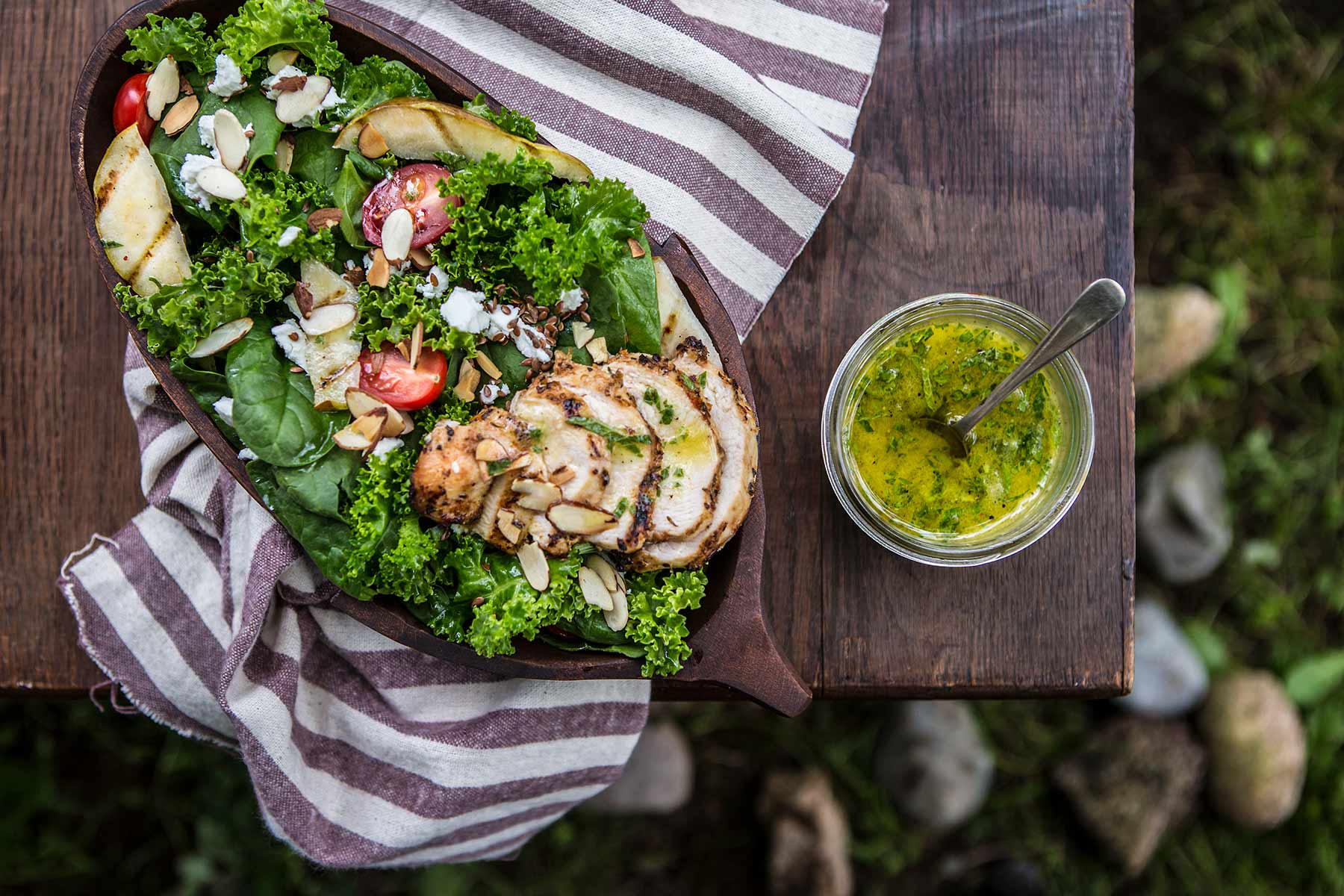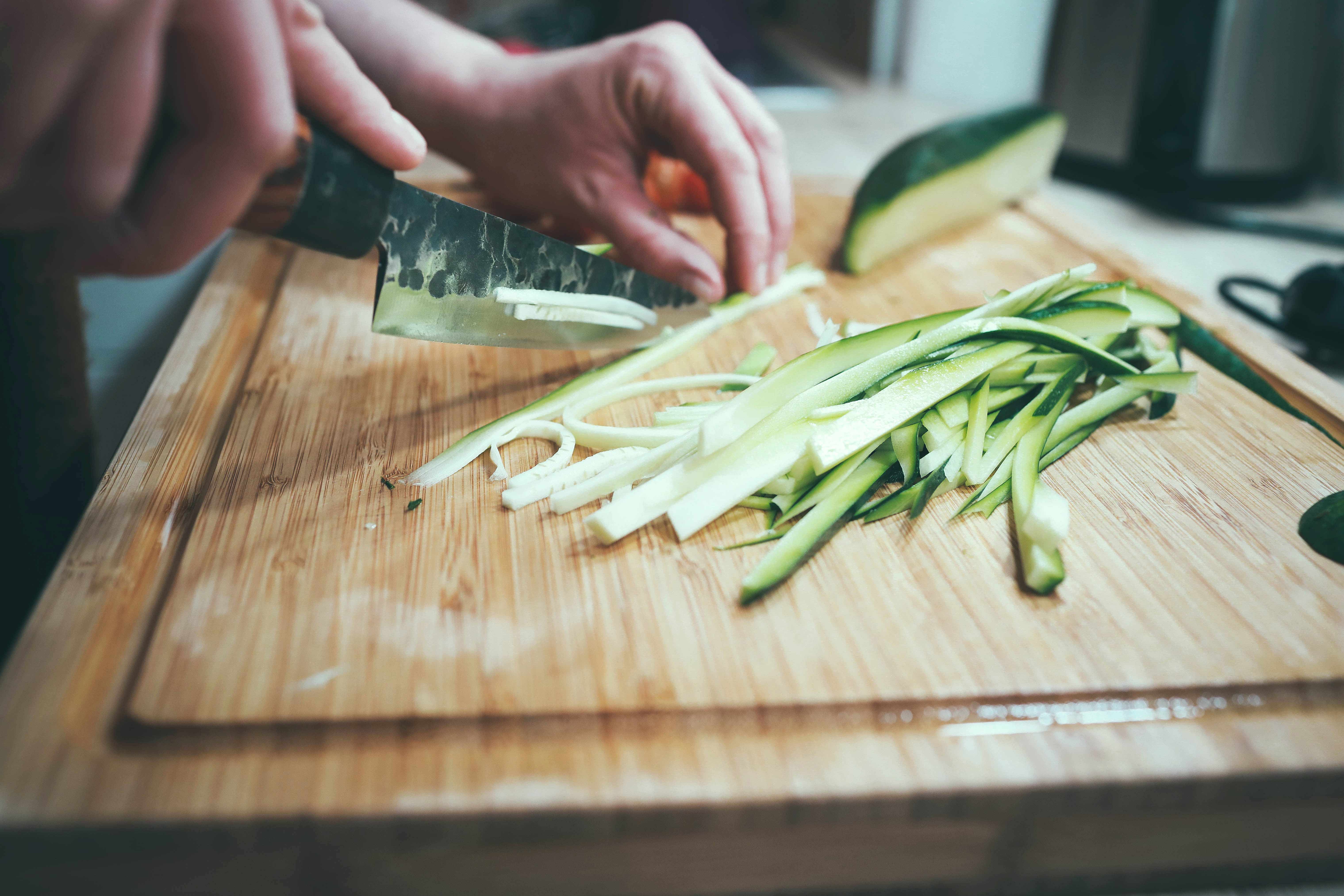Blog
Mindful Approaches to Eating: How Are YOU Eating Your Food?
Dr. Miranda Wiley, NDApril 9, 2018
How Well Do You Chew Your Food?
Food on the plate, to food in your belly. How did it get there? Sure, the obvious answer is that you ate it, but how? Apparently, my grandmother was taught to chew each mouthful 100 times before swallowing. That is a LOT of chewing! Quite honestly it doesn’t take long before it starts to feel redundant (especially for soup) but it’s a good experiment to try.
Consider the whole point of chewing. It is not just to minimize the risk of choking by making the pieces of food marginally smaller! Chewing physically breaks up food into smaller pieces, but it also allows enzymes in saliva to come into contact with as much of that food as possible. Moistening the food with saliva does allow it to be swallowed more safely but since the ultimate goal of eating is to nourish our systems, not just fill the belly and stave off hunger, it is helpful to be mindful of how well we chew.
Meal Time Experiment
To take the pendulum to one extreme, try food meditation. Put away all distractions, clean your hands, rinse your mouth with water to cleanse the palate, and pick a single food to explore. Set a timer for 5 minutes and prepare to engage all of your senses in the discovery of this food. Perhaps pretend you have never seen it before!
- Use your eyes to visually assess the shape, colour, texture, and shimmer of the food you chose.
- Smell it with your eyes open and again with them closed.
- Hold it up to your ear and move it around, rub a finger or fingernail over it to assess any sounds that it may make as you explore it auditorily.
- Trace your finger lightly over the contours of the food. Squeeze it gently, then harder.
- Finally, put the food into your mouth. How does it feel on your tongue? Try pressing it against your palate and between your teeth and cheek. Bite into it slowly and notice the flavours. Without swallowing continue to chew it into smaller pieces, and ultimately into a puree. Do the flavours change with the texture change? Do they improve, weaken, intensify, alter completely?
While it may not be practical to take such an extreme approach to every meal, taking the time to slow down occasionally (or just once as an experiment!) can help you to understand both your approach to food and your appreciation of the food itself.
“approach every meal as if you are at a dinner party”
To maintain mindfulness after this exercise it can be as simple as setting the table, approaching every meal as if you are at a dinner party, or at a nice restaurant. Sit down to eat – avoid eating while walking, working, driving, or distracted in any other way. Set the table, light a candle, play nice music and focus on your meal…most of it is going to become you so give it the attention it deserves!
How Does Your Body React to Your Food?
Once you’ve eaten a meal – normally, and with improved mindfulness – pay attention to the rest of your digestion. How does your body react to the food? If you experience heartburn, belching, bloating, or discomfort it may be necessary to evaluate how you are eating as much as to assess what you are eating.
Our nervous system is like a teeter-totter. When stress is high and there is an expression of “fight or flight” hormones then digestion becomes a low priority to the body – if you’re about to be eaten by a bear then it really doesn’t matter if you digested your last meal, does it?
When stress is low and the mind and body are calm then we return to “rest and digest” mode. Blood returns to the digestive tract and the focus is on repairing any damage done during the fight or flight and strengthening the system before the next challenge. This is the state to be in when consuming food. Mindfulness is part of that equation.
Stay Focused
Distraction while eating impairs the digestive process. It could be argued that the first stage of digestion is chewing but before we even bring the food to our mouth digestion has begun in the “cephalic stage” (a.k.a brain stage). The anticipation of food begins the cascade of energy and enzymes that sets the stage for proper assimilation of food and metabolism of nutrients. Taking the time to prepare the meal, or choosing from a menu and then waiting for it to arrive, gives the brain and body time to connect so that they can work together to engage in the digestive process.
How does your energy change with eating? Many people experience a drop in energy after eating. This could be a gentle dip as the body directs blood and attention inwards to receive the new food, or it may be a full crash into lethargy as your system tries to deal with partially chewed food, inadequate release of digestive juices from the stomach, pancreas, liver and/or small intestine.
Don’t Forget to Reflect!
Use this week to explore how you approach meals and how your body responds to different ways of eating. Perhaps a few deep breaths or a moment of calm reflection before picking up the fork, or consciously chewing each bite until it is well pureed will make a difference in your daily life. Certainly, it will do no harm! Remember, we have a helpful worksheet that you can download here and take with you where ever you go!
Share your experience with us through social media by tagging @BotanicaHealth #MindfulNutrition on Facebook, Twitter, and Instagram.



